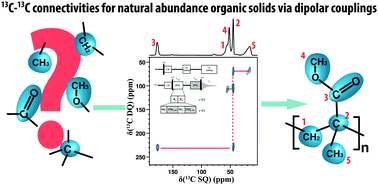Determining carbon–carbon connectivities in natural abundance organic powders using dipolar couplings†
Abstract
We present a solid-state NMR methodology capable of investigating the carbon skeleton of natural abundance organic powders. The methodology is based on the 13C–13C dipolar coupling interaction and allows carbon–carbon connectivities to be unambiguously established for a wide range of organic solids. This methodology is particularly suitable for disordered solids, such as natural or synthetic macromolecules, which cannot be studied using conventional diffraction or NMR techniques.



 Please wait while we load your content...
Please wait while we load your content...